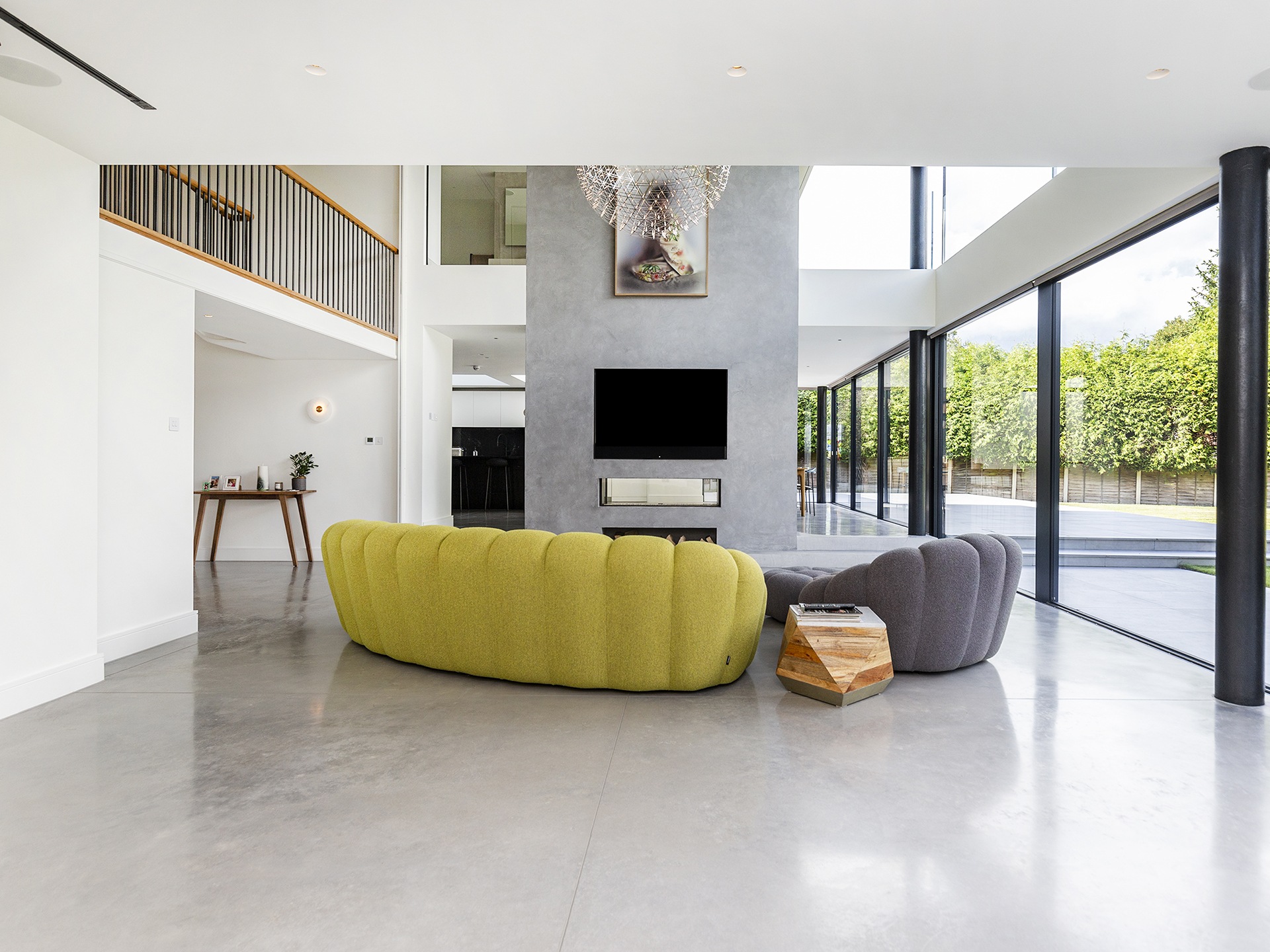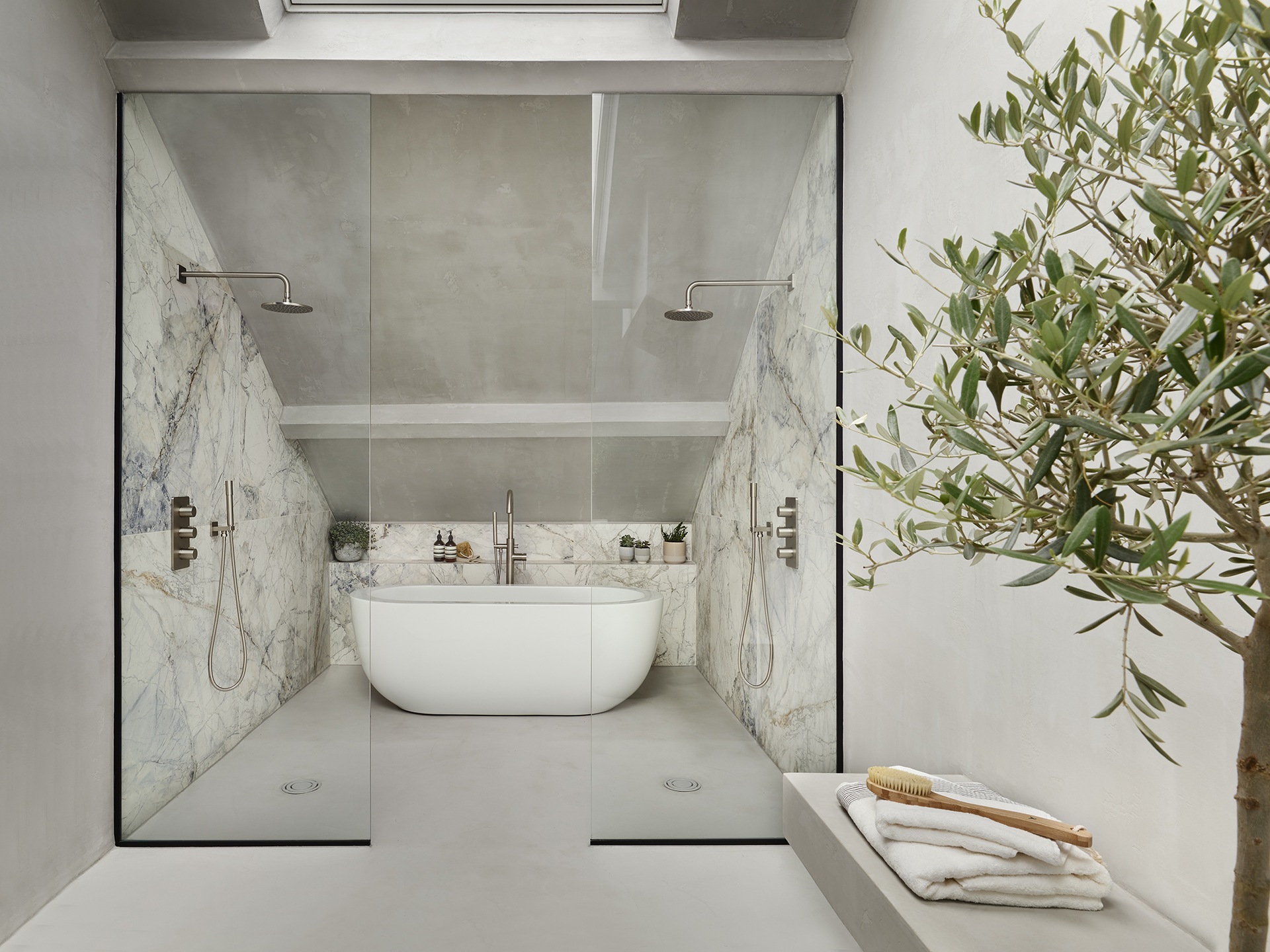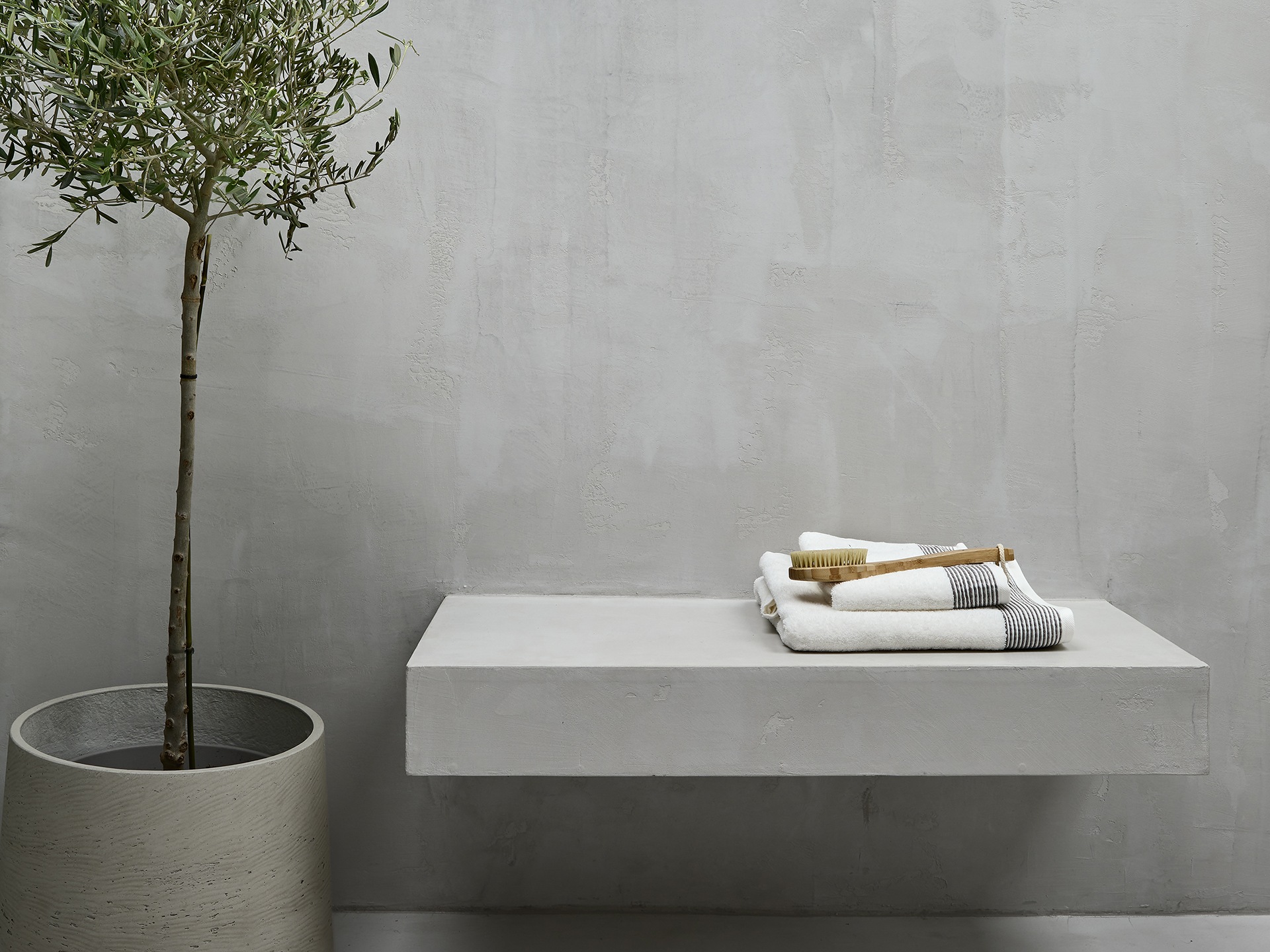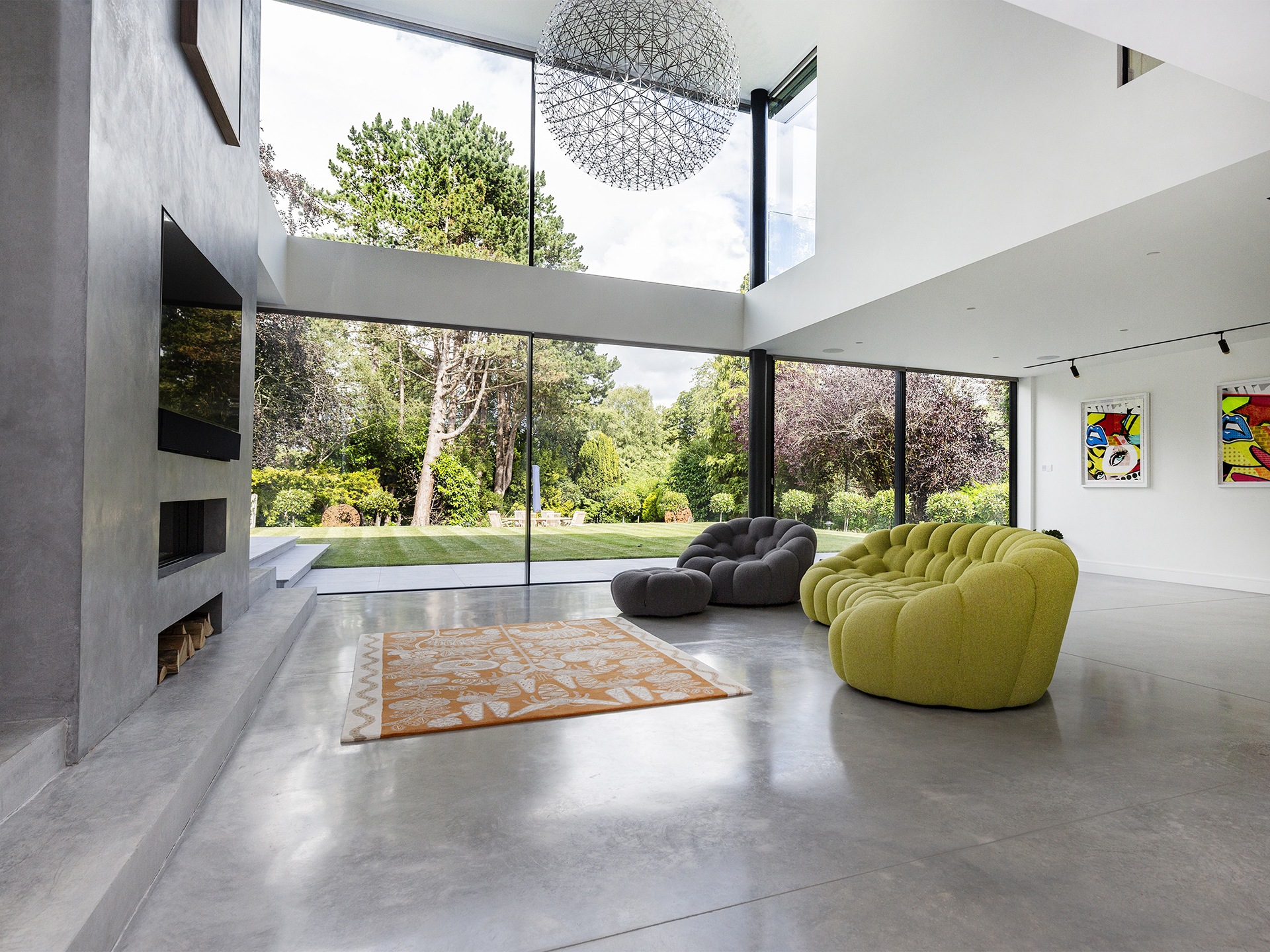What is microcement? Everything you need to know about one of the coolest materials around
We've got all the facts on microcement, the material you need to give your home that hip, industrial look
Microcement is, you guessed it, a type of cement. Specifically, it’s a cement powder mixed (usually) with quartz powder and resin, which is applied in a very thin layer to give a hip, industrial-chic, polished-concrete look to pretty much any surface. Because it is applied so thinly, it is much lighter, as well as much cheaper, than standard concrete.
Microcement may also be called microcrete, microconcrete, micro-overlay, micro-topping or cement coating. Microcement is mixed on-site and applied in layers to a total thickness of only 2-3mm. It is applied by hand with trowels, like plaster, and the finished surface is smooth and free of joints.
Pigments can be added to the mix to give different shades and colours. Companies such as Concrete Lab sell microcement colour-matched to their polished concrete products so that a seamless look can be achieved if you want to use it alongside polished concrete.

Image credit: Luxury residential specialists Verus Construction
Where can microcement be used?
Because it adheres strongly to whatever it is applied to, microcement can be used on all kinds of vertical and horizontal surfaces, including walls, floors, ceilings, countertops, benches, and wet rooms. It can be used in pretty much any room of the house. Because it is waterproof, it works well in bathrooms, kitchens and swimming pool surrounds, though you will need to choose a non-slip finish if you’re using it in a wet room or similar.
Because microcement is applied in very thin layer, it is very light in comparison with traditional concrete. This means it can be used to create the fashionable concrete look in areas such as loft rooms, where concrete itself would be too heavy. Barrie Cutchie, of bathroon designers BC Designs, says, “A big trend at the moment is concrete, but this can be expensive and heavy, especially in upstairs bathrooms. A great alternative is to use microcement, which is a specialist coating that can be applied to any hard surface and replicates the design aesthetics of real concrete for a modern, minimalist design. Best of all, it is waterproof and suitable for underfloor heating so makes the perfect alternative to tiles for a walk-in wet room.”

Image credit: BC Designs
Microcement can be applied to any solid, dry, non-flexible surface, including plasterboard, old tiles, concrete and screed. Just remember though, if the underlying material cracks then the microcement will crack too. Preparation of the surface is very important. All the cracks need to be filled and the surface needs to be sanded and thoroughly cleaned. Fibreglass mesh is available to cover particularly rough patches and joints.
Outdoors
Microcement can be used outdoors too. It’s great for things like outdoor kitchens, balcony floors and terraces. You may well need to use a UV-resistant seal if you’re using it outside, and you may need to reseal the surface periodically.
How is microcement applied?
Applying microcement is a skilled job rather than a DIY task. After the substrate has been primed and ‘keyed’, the cement mixture is applied with a trowel in two or three thin layers. After each layer has been applied it has to be left to dry then sanded down and cleaned.
One or two base layers of a slightly different composition to the top layer may well be used first. Once the final coat has been sanded down and cleaned it will be sealed with a sealant to give the desired finish (matte, satin or gloss) and make the surface waterproof.

Image credit: BC Designs
Microcement vs polished concrete
Microcement can be a quicker and cheaper way of achieving the polished-concrete look. It is suitable for external use, which polished concrete is not. And it doesn’t require expansion joints, or all the heavy equipment needed to lay concrete.
Types of microcement
Different companies sell their own special microcement mixes for different purposes. For example, in its range of cement coatings, Living Concrete offers a specific Aquacrete that can be used to renovate swimming pools; while Carrcrete has a product called MicroTerrazzo that contains tiny pieces of coloured stone. This aggregate can be anything from glass to granite, quartz to limestone to give a very different look from the standard polished-concrete look. The message is: take some time to do your research, this is a relatively new product and manufacturers are developing new variants all the time.
Whatever you choose, it is a good idea to pick a product intended specifically for the purpose you are going to use it for, eg purpose-made floor microcement should be more durable than a product intended for use on walls.
VOCs
Standard microcement does contain volatile organic compounds (VOCs), which some people don’t like to have in their homes because of worries over allergies and longer-term health concerns. But water-based microcements, with no VOCs, are easily available, for example Topcret’s Baxab Eco. These just take a little longer than the resin-based products to cure (set) between coats.
Sustainability
Traditional concrete has a bad reputation because of its large carbon footprint. Microcement is more sustainable because a similar effect to traditional concrete can be gained by using much smaller quantities of product. It may also mean there is less need to demolish or throw away materials because you can simply apply microcement over old surfaces that are no longer fit for purpose.
There are several specifically environmentally friendly microcement products. For example, Carrcrete contains ground recycled glass instead of sand, and uses concrete that requires less CO2 to produce than traditional concrete. Similarly Topcrete’s Baxab Eco contains recycled materials and has Leadership in Energy and Environmental Design (LEED), Building Research Establishment Environmental Assessment Methodology (BREEAM) and WELL building certifications.
Maintenance
The best way to clean microcement is to wipe or mop it down regularly with water and a pH-neutral cleaner using a microfibre cloth or mop and. Don’t use abrasive cleaning products. It’s important to get rid of grit as this can scratch the surface. Don’t drag furniture across the surface and use floor protectors on the feet of your furniture.









